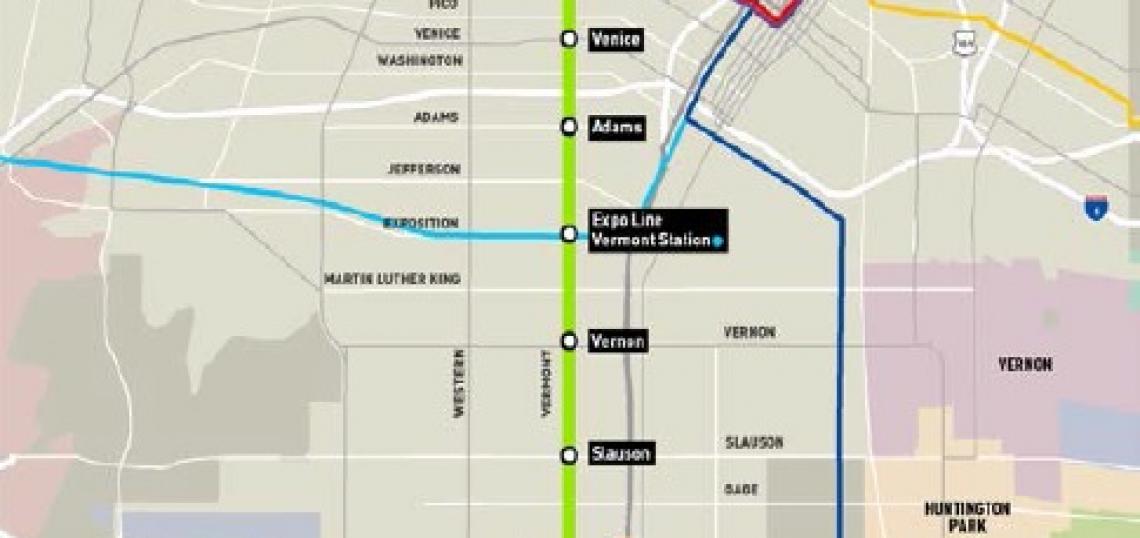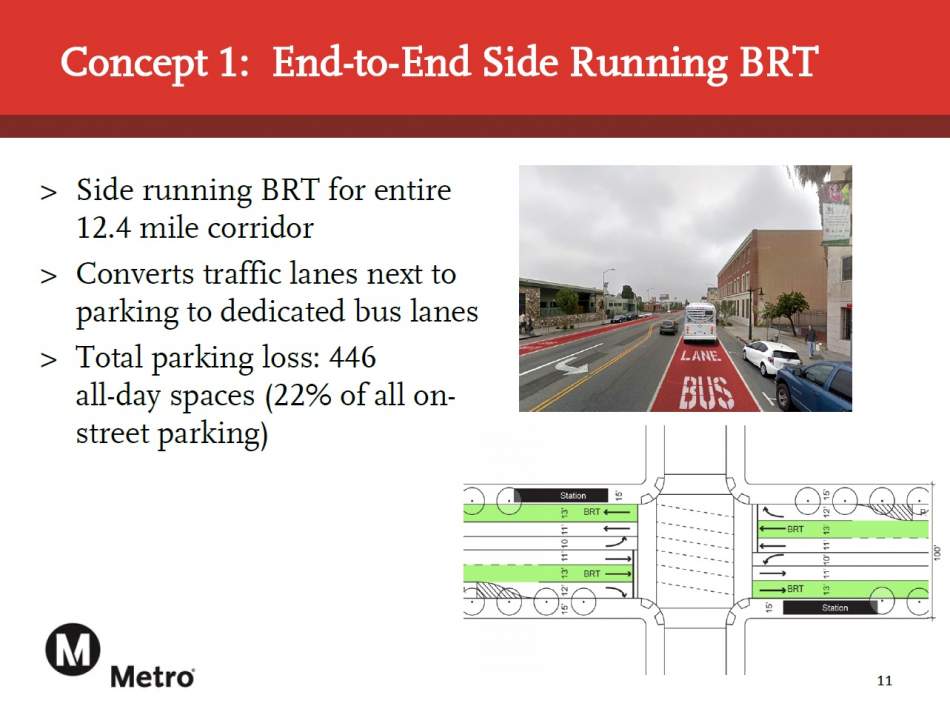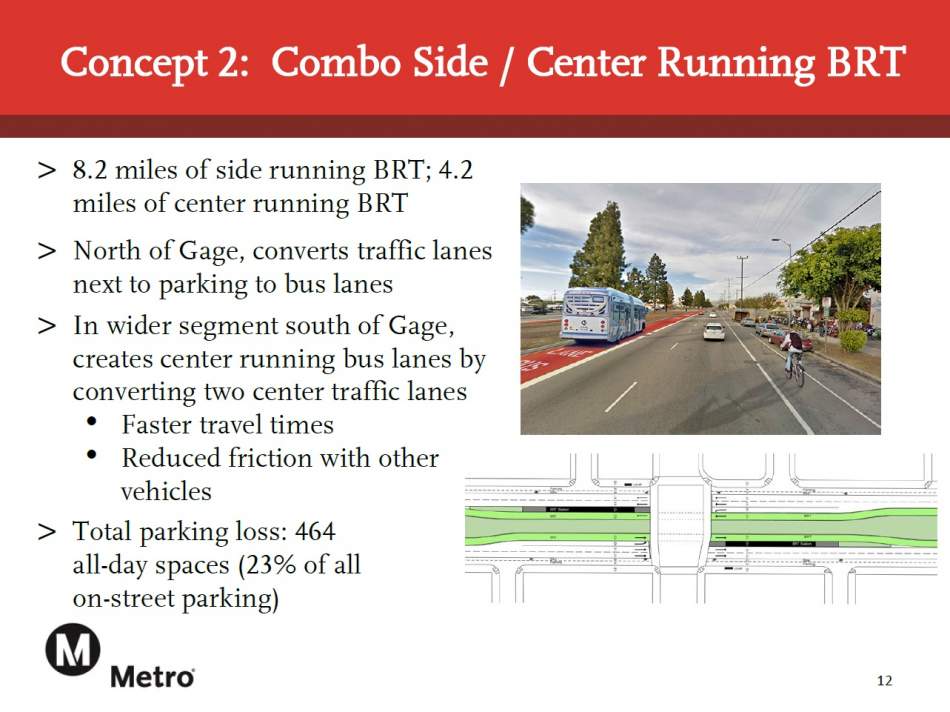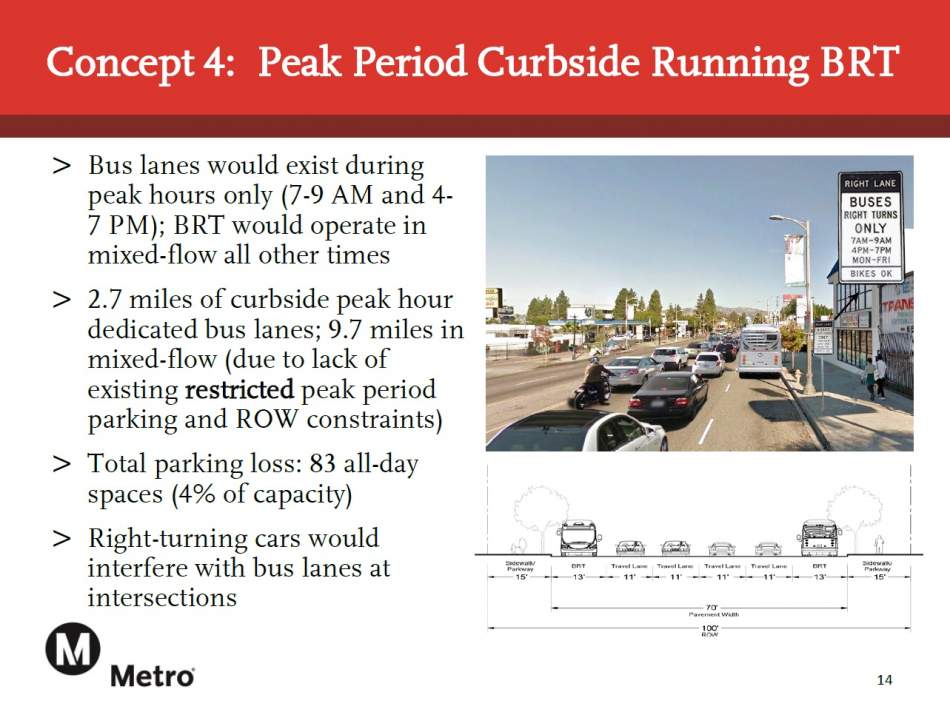Next week, Metro's Westside/Central Service Council will review a technical study for a proposed bus rapid transit line which would link the Red, Purple, Expo and Green Lines via Vermont Avenue.
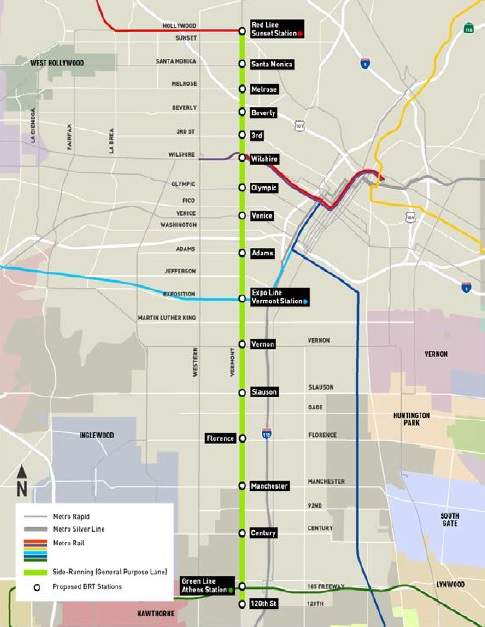
The project stretches approximately 12.4 miles between Hollywood Boulevard in Los Feliz and 120th Street in the unincorporated community of Athens. South of Gage Avenue, a former railroad right-of-way provides a generous 200-foot wide right of way for potential transit service.
With 45,000 daily boardings between Metro's 754 and 204 lines, Vermont is the second busiest bus corridor in the Metro network after Wilshire Boulevard. However, heavy congestion often interferes with service, resulting in slow travel speeds, late arrivals and overcrowding.
To alleviate this issue, Metro included bus rapid transit service for Vermont within Measure M, the transportation-funding tax measure passed by L.A. County voters this past November. The ballot measure included $25 million in seed money for the project, which is anticipated to break ground in 2024 and open by 2028.
In evaluating the potential Vermont BRT Line, Metro is looking to address five problems:
- Slow bus speeds caused by traffic
- Intersection delays and service reliability concerns due to congestion
- Excessive dwell times at busy stops
- Absence of customer-friendly amenities at stops
- Poor pedestrian access between bus stops and Metro Rail stations
To do this, the agency is currently analyzing four alternatives for the project.
This alternative would create curbside bus-only lanes for the full 12.4 miles of the project. It would remove traffic lanes and come at the expense of 446 all-day parking spaces.
The curbside alternative would provide time savings of 13 to 19 minutes over the existing 754 rapid bus, with a ridership forecast of 74,050 daily passengers by 2035.
Construction would cost approximately $321.7 million, with yearly maintenance costs of $12.7 million afterward.
Approximately 8.2 miles of the route would feature side-running BRT, taking a lane of automobile traffic adjacent to street parking. South of Gage Avenue, the wide right-of-way would allow buses to run within Vermont's center median, decreasing travel times and potential collisions with other vehicles.
This alternative would result in 464 lost parking spaces along the 12.4-mile route.
Time savings over the existing 754 line would range between 13 and 20 minutes, with a forecasted ridership of 74,380 daily riders by 2035.
The project would cost $331.8 million, with an annual maintenance budget of $12.7 million.
Buses would travel on curbside dedicated bus lanes for 7.3 miles, and then in mixed traffic for 5.1 miles due to right-of-way constraints. On-street parking would be converted to bus lanes where possible, at the expense of 1,100 spaces.
Right-turning cars could interfere with buses at intersections.
Times savings under this option are estimated at 7 to 8 minutes, with a daily ridership of 66,480 under 2035 conditions.
Construction costs are estimated at $234.8 million, with $13.1 million per year for maintenance after completion.
Next Steps
The fourth concept is the least expansive of the options, calling for bus-only lanes during peak hours (7-9 am and 4-7 pm), and mixed-flow operations at others times. Peak hour lanes would be restricted to just 2.7 miles of the route, with mixed-flow operations expected for the remaining 9.7 miles.
Time savings are estimated at 6 minutes during the evening rush hour, with an anticipated daily ridership of 63,850 by 2035.
The project would cost approximately $144.5 million to construct, and $13.4 million per year to maintain afterwards.
The technical study goes on to note that a dedicated bus lane can carry between 1,400 and 1,600 perople per hour, compared to just 900 people in mixed-flow lanes. This is particularly relevant, as traffic conditions are not expected to improve on Vermont between now and the completion of the bus rapid transit line.
The first two concepts - side-running BRT and combo side/center-running BRT - are recognized as the strongest performers in terms of travel time, speed, ridership and potential to reduce vehicle miles traveled.
A second phase of the study will examine how the bus rapid transit lanes could be converted to a rail line in the future. Measure M would allow for such a conversion to occur after the year 2067.
A study is also underway for another Measure M bus rapid transit line between North Hollywood and Pasadena.
- Vermont Corridor BRT Technical Study (Metro)
- Measure M Archive (Urbanize LA)




